The Importance of Fundamentals
I had the pleasure of auditing the William Fox-Pitt Clinic at Morningside Training Farm last week. While I was struck by many things I heard and observed, the most striking for me was his focus on the fundamentals of good horsemanship. Whether he was working with 3*/4* riders and their horses or with riders and horses of less experience, he started at the beginning. The first day’s sessions on the flat started with a discussion of, and work on, the warm up. This was followed by a focus on connection, relaxation and rhythm. All of this before any upper level movements. The second day’s jumping sessions started over fences at the trot and the walk before moving on to more challenging exercises. The focus of all the jumping work was on supporting a positive attitude in the horse and encouraging the horse to “find” the jumps. His commitment to good fundamentals and to the welfare and nature of each horse was both admirable and refreshing.
All that focus on fundamentals of horsemanship got me thinking about the riders and what it would mean to focus on the fundamentals of their mental game. So often riders (and I include myself here) are impatient and unforgiving when it comes to ourselves. When a problem arises that is determined to be psychological or mental in origin, we tend to want it to change and change quickly. Riders want their confidence back or their fear and anxiety to go away. NOW! Yet, we all know that change is a process and, while I have tools to help many people effect quick changes in certain circumstances, most of the important psychological attributes of a solid equestrian competitor are nurtured and developed over time.
What is interesting to me is how much of our psychological development within the sport is left to chance. What I mean by this is that we most often hope that our instructors and trainers help us develop mentally and emotionally as competitors solely through the process of coaching and instruction. I have met many gifted trainers who have great instincts and display as much talent and ability helping riders grow mentally and emotionally as they do training horses. Unfortunately, this is not always the case. As students of riding, we are most often concerned that our trainer/instructor is good with horses. How often do we evaluate our trainer/instructor on their understanding of their students and how their students learn? Or, on their ability to help their students develop mentally and emotionally as riders?
So… what would I teach if I was to focus on fundamentals of the mental side of the sport? Would it be motivation or goal setting? Energy management or visualization? I have given some thought lately to what lies at the core of what I believe helps riders develop their mental and emotional skills. For me it boils down to three things: emotional tolerance, capacity to focus, and self-awareness.
In order to face the challenges of our sport and succeed, a rider needs to be able to tolerate a wide range of emotion which may include feelings such as anxiety, frustration, disappointment, fear, anger, excitement, etc. The capacity to accept what we feel, without the immediate need to discharge the feeling or react to it, is the core of emotional fitness. Carol Dweck calls this “grit” and identifies it as an essential underpinning of achievement.
There is an old saying that “What you think is what you do.” If this is true, then you might be wondering why I highlight focus as fundamental and not thinking. The inevitable truth is that most of our minds are very active and produce thoughts at an incredible rate. My wife learned a long time ago not to ask me what I am thinking, because if I am honest and don’t filter my thoughts, that moment of thinking takes about 5 minutes to explain. The great challenge is to focus our minds on what is meaningful, important or helpful in that particular moment. I often use the metaphor of a stage. A skilled director can focus the attention of the audience on one part of the stage using lights and action. In that moment, many other things can be going on in different parts of the stage and we don’t even notice them. If we can strengthen our ability to focus our attention and our minds on the positive and productive, the negative thoughts and feelings may still be there but they are relegated to the background and they lose their power to disrupt our performance.
Finally, I would teach self-awareness. By self-awareness I am talking about knowing oneself on a multitude of levels. One of the most obvious might be physical self-awareness so that we have the ability to know what our body is doing and when. This way we can grow in our technical skillfulness. I am also talking about awareness of our strengths and limitations. Whether we are talking about skill, knowledge, experience, or other personal resources it is profoundly helpful be able to access and apply what we do well. It is equally helpful to know what we don’t know and can’t do well, so that we can ask for help and assistance when appropriate. Self-awareness also includes an understanding of our thoughts and emotional reactions. Knowing how we characteristically respond to the world and its challenges can go a long way in helping sidestep many of the detours and pitfalls commonly experienced by students on the path to better horsemanship.
When you are prepping for the next show or event, I encourage everyone to draw an all the mental skills and strategies that you have found helpful in the heat of competition. And, if your interested in making those skills and strategies even more effective invest time and energy on strengthening your fundamentals.


